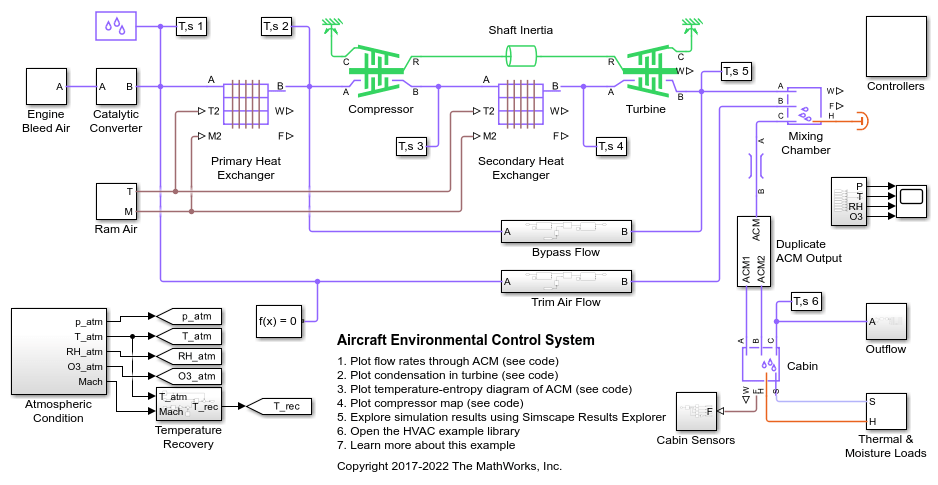Flow Resistance (MA)
General resistance in a moist air branch
Libraries:
Simscape /
Foundation Library /
Moist Air /
Elements
Description
The Flow Resistance (MA) block models a general pressure drop in a moist air network branch. The drop in pressure is proportional to the square of the mixture mass flow rate and inversely proportional to the mixture density. The constant of proportionality is determined from a nominal operating condition specified in the block dialog box. Set the Nominal mixture density parameter to zero to omit the density dependence.
Use this block when empirical data on the pressure losses and flow rates through a component is available, but detailed geometry information is unavailable.
The block equations use these symbols.
| Mass flow rate | |
| Φ | Energy flow rate |
| p | Pressure |
| ρ | Density |
| R | Specific gas constant |
| S | Cross-sectional area |
| K | Proportionality constant |
| h | Specific enthalpy |
| T | Temperature |
Subscripts a, w, d, and
g indicate the properties of dry air, water vapor, water
droplets, and trace gas, respectively. Subscripts A and
B indicate the appropriate port.
Mass balance:
Energy balance:
If the Nominal mixture density parameter value, ρnom, is greater than zero, then the block computes the pressure drop as
where:
flam is the fraction of nominal mixture mass flow rate for laminar flow transition.
pin is the inlet pressure (pA or pB, depending on flow direction).
Tin is the inlet temperature (TA or TB, depending on flow direction).
The proportionality constant is computed from the nominal flow conditions as
If the Nominal mixture density parameter is set to zero, then the block computes the pressure drop as
where the proportionality constant is computed from the nominal flow conditions as
The flow resistance is assumed adiabatic, so the mixture specific total enthalpies are equal
Assumptions and Limitations
The resistance is adiabatic. It does not exchange heat with the environment.
The pressure drop is assumed to be proportional to the square of the mixture mass flow rate and inversely proportional to the mixture density.


